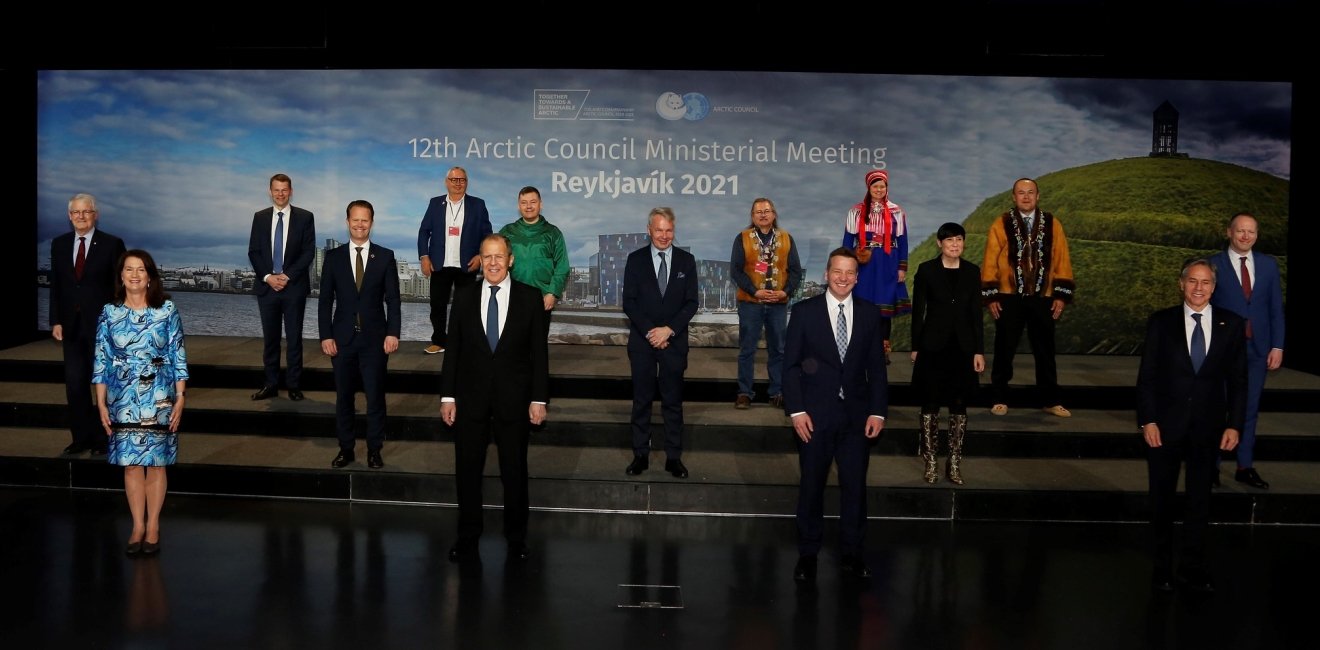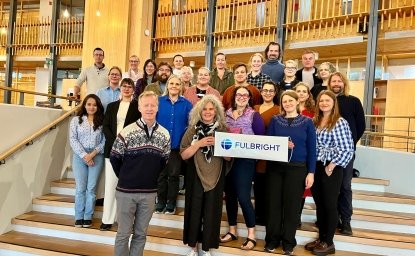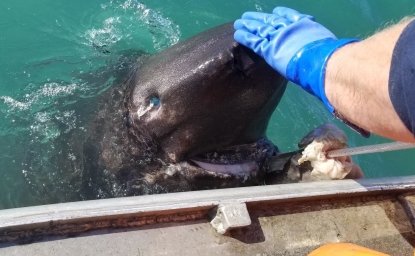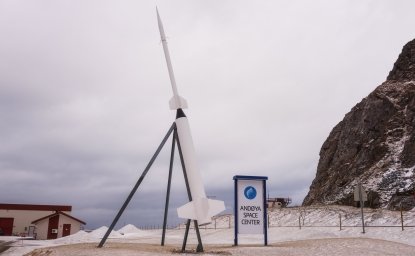Creation of the Arctic Council
The eight Arctic nations established the Council in 1996 when they signed the Ottawa Declaration, transforming an existing framework called the Arctic Environmental Protection Strategy (AEPS) into a new forum that brought the Arctic States together with Indigenous peoples’ organizations. The Ottawa Declaration gave the Council a focus on sustainable development and environmental protection, and placed military security issues outside of the Council’s mandate. All decisions would be taken by a consensus of the Arctic States.
The idea for establishing the Council came from Canada, which was particularly interested in promoting economic benefits for its Inuit population. The other seven governments were supportive, but some at least wanted to ensure that the body would be formed primarily as forum for discussions and not as an international organization that would negotiate rules and regulations. The working groups of the AEPS would be folded into a structure led by “Senior Arctic Officials” from each of the eight countries, with a ministerial-level gathering once every two years at which the ministers would give direction for the following two years of work.
The Ottawa Declaration was relatively bare-bones, and the States agreed in that document to negotiate and agree on rules of procedure “as its first order of business,” which meant that the substantive work of the Council had to wait for about a year for those rules to be completed. Once that occurred, the initial Canadian chairmanship began work in earnest to prepare for the first Ministerial meeting, which they would host in Iqaluit in 1998.
In that first Ministerial, the Members admitted Observers for the first time and established its first new subsidiary body, the Sustainable Development Working Group. Moreover, the Council began its tradition of the Ministers issuing a substantive declaration, a practice that would be followed until the Rovaniemi meeting in 2019.
The Council in the New Millennium
Over the years, the Council has developed in tandem with the international importance of the Arctic. In 1996, Arctic diplomacy was the preoccupation mostly of countries located in the region, and even the ministerial meetings were, by today’s standards, relatively small affairs. But over time, the effectiveness of the Council became clear to all the Arctic States. The Council met both political and practical needs. Arctic State leaders benefited from having a forum in which they could address regional issues at high diplomatic levels once every two years. And the regular work of the Council, taking place in the Working Groups and other ad hoc bodies, produced results that all the States and the Indigenous groups (“Permanent Participants”) supported. The efforts ranged from large-scale reports that received international attention, like the Arctic Climate Impact Assessment (2005) and the Arctic Marine Shipping Assessment (2009), to less well-publicized but valuable work on ecosystem-based management, protection of flora and fauna, pollution monitoring, etc.
The Council also formed a kind of safe space for the United States and allied governments to have a professional and productive discourse with the Russian Federation, despite numerous geopolitical tensions that limited cooperation in other venues. Indeed, as a result of its contributions in maintaining the Arctic as a relatively stable and cooperative region, the Council has received more than one nomination for the Nobel Peace Prize.
The Council also evolved in several significant ways. When the Arctic States saw the need to develop a legally binding agreement to promote cooperation on search and rescue in the Arctic, the Council created a Task Force through which to conduct the negotiations. Ministers signed the resulting Agreement on Cooperation on Aeronautical and Maritime Search and Rescue in the Arctic in 2011. Two years later, they signed a second such treaty, the Agreement on Cooperation on Marine Oil Pollution Preparation and Response in the Arctic, and a third treaty in 2017, Agreement on Enhancing International Scientific Cooperation in the Arctic.
The three treaties share a number of common elements. First, each arose from a perception among the Arctic States of their mutual interests in the opening Arctic region. The governments realized that, acting alone, they lacked the capacity to respond to increasingly likely search and rescue needs and potential oil spills. The same governments also saw a common need to promote greater scientific research in the Arctic. Second, the treaties reflect a growing recognition that the Arctic Council could expand its scope into topics that did not fit squarely within either “sustainable development” or “environmental protection” and could deliver products that entailed binding commitments by its members.
As interest in the Arctic grew, the Council also received a large number of applications for Observer status—from non-Arctic States and a variety of organizations. At this point, the Council has admitted 38 Observers (13 non-Arctic States, 13 intergovernmental organizations, and 12 non-governmental organizations). The European Union also participates as an Observer at Arctic Council meetings, although the Council has not formally approved its application yet. The Observers contribute to Council work in a number of ways, including by providing financial and intellectual resources and by hosting certain meetings. The sheer number of Observers has also created an unusual dynamic for a body with only eight members States and six Permanent Participant groups. Some Observers wish to play a larger role in Council initiatives; the Council has, in limited ways, sought to accommodate this interest while not compromising their control of the Council.
Static in the Line
The dramatic impacts of climate change in the Arctic have driven much of the increasing attention to the region. The Arctic, which over the past 50 years has warmed at approximately three times the rate of the planet as a whole, has seen significant loss in ice, increased shipping, melting of permafrost and numerous changes affecting the local inhabitants.
That is why the Trump Administration’s sharp policy turn against both addressing climate change, and its antipathy toward working within multilateral institutions, had a predictably negative impact on the Arctic Council. While Trump Administration stances against the United Nations, the World Health Organization and even NATO got more headlines, the unwillingness of the Trump Administration to work productively on climate change impacts in the Arctic Council sapped the forum of some of its vitality. The work by U.S. climate scientists in the Council continued, as did U.S. engagement in the Council’s subsidiary bodies, but this work certainly did not receive the same political support from the United States as it had before. And all participants knew that attempting to get the United States to support efforts to highlight the importance of climate change in the Arctic would be uncertain if not impossible.
Things came to a head when Secretary of State Pompeo arrived in Finland for the Arctic Council Ministerial meeting in 2019. Despite the historical approach of the United States and others to separate out security issues from the Council, Pompeo delivered a speech strongly criticizing China and Russia the day before the Ministerial. In addition, although the U.S. delegation negotiating the Ministerial declaration had, just prior to the meeting, managed to obtain agreement in principle to a text that included climate references that were consistent with instructions from the White House, U.S. political appointees in the final moments reversed course and insisted that no declaration be issued. This turn of events shocked the others with whom the United States had been negotiating, and constituted a considerable disappointment to Finland, which had worked tirelessly to accommodate U.S. concerns.
The willingness of the United States to walk away from the cooperative norms in the Council and its opposition to dialogue on climate policies left the United States isolated in Arctic diplomacy at least for a while. It also left the Council somewhat adrift.
Outcomes of the 2021 Ministerial
Seen in this light, the 2021 Arctic Council Ministerial meeting represented a return to normalcy, albeit under conditions made challenging by the ongoing pandemic. The gathering—a hybrid event featuring the eight foreign ministers, the six heads of the Permanent Participant groups and a small number of others convening in Reykjavik, with others participating virtually—produced an agreed declaration that brought to fruition the programs and projects of the Icelandic chairmanship and outlined the work to be undertaken during the Russian chairmanship.
Equally important, the statements made during the meeting reflected a renewed commitment to work together through the Arctic Council to address the common problems facing the Arctic region, with climate change at the forefront. Secretary of State Blinken in particular sought to distinguish the approach taken by the Biden Administration from that of the Trump Administration, emphasizing the desire of the United States to advance “a peaceful Arctic region where cooperation prevails on climate, the environment, science and safety, and where sustainable economic development benefits the people of the region themselves. This council is indispensable to this vision.”
The Reykjavik Declaration certainly includes a good deal of sober language about the effects of climate change on the Arctic and called for concerted efforts to address climate change worldwide—the very sort of language that the Trump Administration refused to accept in 2019. For example, the Declaration notes with “utmost concern” that for the past 50 years the Arctic has warmed at a rate three times the global average with harmful effects on the environment, biodiversity, society and infrastructure, as well as on subsistence-based livelihoods of many Arctic communities, recognize[s] that deposition of black carbon in the Arctic accelerates melting of snow and ice, intensifying the adverse effects of climate change, and that future, global emissions of greenhouse gases and short-lived climate pollutants (SLCPs) will largely determine the extent of climate change for the Arctic, reiterate[s] the need for enhanced action to meet the long-term temperature goal and effective implementation of the Paris Agreement, to reduce emissions of greenhouse gases and SLCPs and slow the rate of increase in average temperature at the global level and in the Arctic.
The Declaration also calls attention to a range of worthwhile initiatives undertaken during the Icelandic chairmanship, including a new venue for promoting cooperation on Arctic marine issues, a regional action plan to combat litter (including plastics) in the marine environment, and a first-ever long-term strategic plan.
During the Ministerial itself, speakers focused on a positive cooperative agenda and largely avoided mentioning geopolitical tensions that exist between Russia and the other Arctic States, or about conflicts arising elsewhere (e.g., in the Middle East). That said, the fact that the eight foreign ministers came in person to Reykjavik for the event made possible a number of side meetings to discuss such matters, including the first fact-to-face meeting between Secretary Blinken and Foreign Minister Lavrov of Russia. During a press conference that followed the Ministerial, Minister Lavrov responded to repeated questions about security issues in the Arctic by suggesting, among other things, a renewal of meetings among Arctic Chiefs of Defense—a process that has been on hold since Russia’s invasion of Crimea.
Looking Ahead
The attendance of all eight foreign ministers at the Ministerial on May 20 also underscored the importance of the Arctic and Arctic diplomacy. The biennial ministerial has become an obligatory meeting for the most senior diplomats, where important national objectives are pursued.
The Russians now take over as chair of the Council. That role is an important one, as the other States look to the chair to pursue its policy mandate and to speak to the rest of the world about Arctic priorities. The handover from Iceland has gone well, although not without some misgivings from those worrying about how Russia will undertake this task. In this context, will it try to promote any part of its domestic agenda that causes concern to other Arctic States? Will it provide the kind of energy and attention to its chairing role that other recent chairs have done? This is the second time that Russia has had this role, so it is not a new experience for the Russian Ministry of Foreign Affairs and other agencies. Russia certainly has the capability to lead a successful chairmanship for these two years, one that brings the Arctic States together in a common set of goals.
The Russians have indicated that their chairmanship priorities are: Arctic inhabitants, including indigenous peoples; environmental protection and climate change; social and economic growth; and further strengthening the Arctic Council as the key framework of international Arctic cooperation. Minister Lavrov pledged that Russia would ensure the continuity of the Council’s agenda in the upcoming period and carry on its ongoing projects and initiatives.
Given the signals from the foreign ministers at Reykjavik and the substantive, detailed documents issued, there are good prospects for the Council’s work during the coming Russian chairmanship. Tensions over geopolitical questions or regional security will remain, and will not be forgotten or side-stepped by the United States and others, but for the moment it appears that cooperation on the core issues of the Council (sustainable development and environmental protection) can proceed on a normal path.








